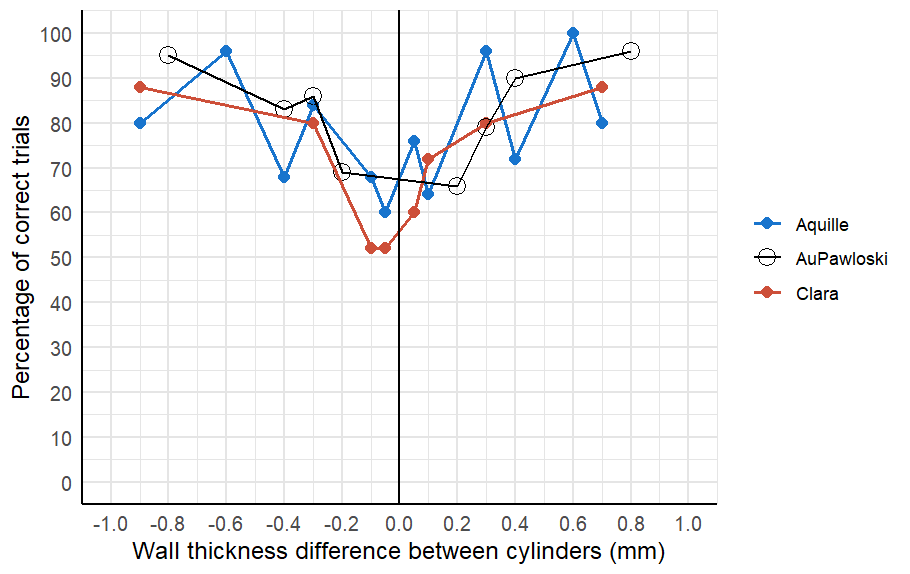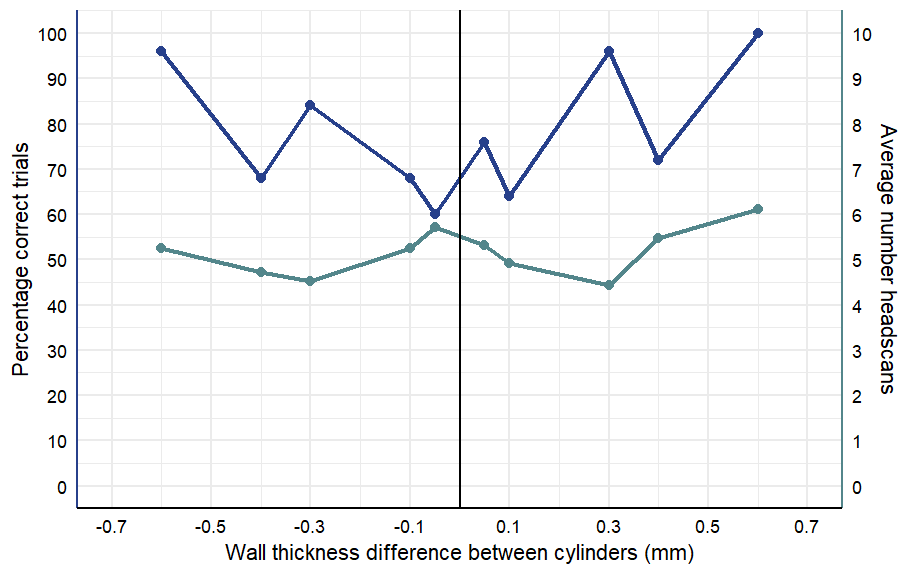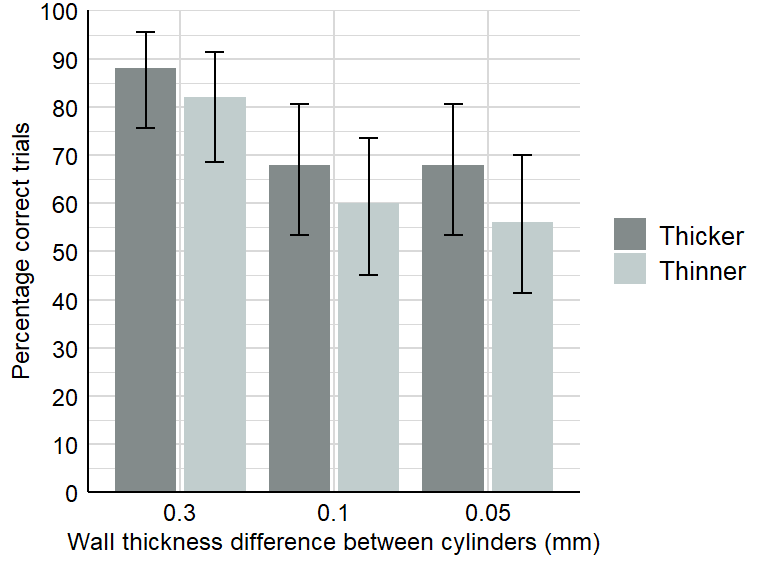Performance

Both animals decreased the percentage of correct trials as the cylinders had a more similar wall thickness. Au & Pawlosky (1992) results follow a similar pattern.
A percentage of correct trials lower than 70% is not statistically significant, so in cylinder combinations with percentages lower tha this we cannot consider that the dolphin can differentiate the cylinders above chance level.
Au & Pawloski found the discrimination threshold around the 0.2 mm thickness difference while in the present study we found significant results for some of the 0.1 mm and 0.05 mm thickness differences.
Scanning behavior

Aquille’s scanning behavior presents a trend.
The number of head scans starts high in the first cylinder combinations presented to the animal (the ones with larger wall thickness differences) and it decreases until the cylinder combinations that differed by 0.3 mm in wall thickness.
In the cylinder combinations with smaller differences (0.1 mm and 0.05 mm) the number of head scans increases again, and is presented alongside a decrease in the percentage of correct trials. The number of head scans increased in the more difficult trials.
Clara’s data collection happened in two different periods (2022 and 2024).
We observe a significant difference in the number of scans recorded, with the 2022 data (represented by blue points on the graph) differing notably from the 2024 data. These differences make it impossible to identify any consistent pattern in the number of head scans relative to the performance.

Performance variation between thicker and thinner cylinders

Having thicker and thinner cylinders of the same wall thickness difference to the standard cylinder allowed us to assess whether the dolphins found it easier to discriminate thicker or thinner cylinders.
Both dolphins demonstrated a higher success rate when the comparison cylinder had a thicker wall compared to the standard one (except for Aquille in the cylinders that differed by 0.1 mm).
When the data from both dolphins is combined, we observed a significant difference in their performance between thicker and thinner comparison cylinders, suggesting that dolphins may be better at discriminating the standard cylinder when the comparison cylinder has thicker wall thickness.